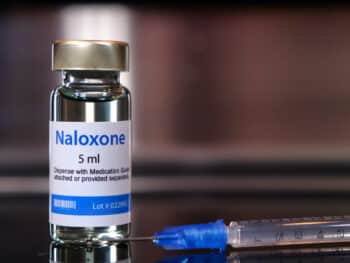Naloxone (Narcan)

What Is Naloxone?
Naloxone is a medication specifically designed to rapidly reverse Opioid overdose. Often known by the brand name Narcan, Naloxone is an Opioid antagonist, meaning that it binds to the Opioid receptors in the brain and blocks the effects of Opioid drugs like Heroin, Morphine, and prescription pain relievers. In scenarios where someone has consumed a dangerous amount of Opioids or has been exposed to toxic amounts of Fentanyl, Naloxone acts as a lifesaving intervention by restoring normal respiration to an individual whose breathing has decreased or stopped due to an Opioid overdose.
Administration Of Naloxone
Administering Naloxone promptly and accurately during an Opioid overdose can make the difference between life and death. Understanding the different methods of administration is vital for anyone who may need to respond to an overdose.
Nasal Spray (Narcan): This is one of the most user-friendly and commonly used methods, especially for non-medical professionals. To use the nasal spray:
- Lay the person on their back.
- Remove the Narcan nasal spray from its box, hold it with your thumb on the bottom and your first and middle fingers on either side of the nozzle.
- Tilt the person’s head back and provide a single, firm spray into one nostril.
- Move the person onto their side after administering since they may become nauseous.
Injectable (auto-injector and traditional syringe): There are pre-filled Naloxone auto-injectors that guide the user with voice prompts through the process. Each injection provides a single dose of Naloxone; if using a vial, you’ll need to extract the medication with a syringe and then administer. For traditional syringe methods:
- Lay the person on their back.
- Inject Naloxone into the mid-outer thigh, which can be done through clothing if necessary.
- Move the person onto their side after administering since they may become nauseous.
After administering, it’s crucial to monitor the individual closely. Naloxone typically starts working within 2-5 minutes, but if there’s no or minimal response after 3 minutes, a second dose may be given. Remember, the effects of the Opioids might last longer than the Naloxone, so it’s crucial to ensure that the person continues to breathe and remains responsive.
Always seek emergency medical attention immediately after giving the first dose of Naloxone, even if the person wakes up. Opioids can remain in the system, and once the Naloxone wears off, the person might re-enter an overdose state. It’s essential they receive professional medical evaluation and monitoring. The goal is to act quickly but calmly.
Having a clear understanding of how to administer Naloxone can empower individuals to save a life should they ever be faced with an Opioid overdose situation.
Side-Effects Of Naloxone
Naloxone is a safe medication when used as directed. However, like all medications, it can have side effects. Some potential side effects include:
- Nausea
- Vomiting
- Body aches
- Increased heart rate
- Sweating
It is essential to understand that Naloxone may also precipitate withdrawal symptoms in individuals who are dependent on Opioids. This could result in symptoms such as restlessness, irritability, and aggressive behavior.
Despite these potential side effects, it’s vital to remember that Naloxone is a life-saving medication, and its benefits during an Opioid overdose significantly outweigh the risks.
How To Get Naloxone
Naloxone is an essential tool in the fight against Opioid overdoses, and increased accessibility to this medication can save countless lives. If you or someone you know is at risk of an Opioid overdose, it’s crucial to have Naloxone on hand and be prepared to administer it.
Narcan is now available for over-the-counter purchase in US pharmacies, drug stores, and grocery stores and no prescription is required. Some insurance plans cover the cost, but prices can vary depending on your location and specific insurance details.
Another option for getting Narcan is to check local health departments and community-based organizations. Many of these locations distribute Naloxone kits for free or at a reduced cost. They also often offer training sessions on how to recognize an overdose and administer Naloxone.
Some areas have harm reduction programs aimed at reducing the negative consequences associated with drug use. These programs often distribute Naloxone and provide education on its use. They may also offer other resources, such as safe needle exchanges.
Remember, having Naloxone on hand is just one part of addressing the Opioid epidemic. Encourage loved ones who are struggling with Opioid use to seek help and consider carrying Naloxone if you’re in a position to assist someone during an overdose. The more we equip ourselves with the right tools and knowledge, the more lives saved.
Get Help For Opioid Addiction
While Naloxone is a vital tool in Opioid overdose prevention, it is not a substitute for comprehensive addiction treatment. Overcoming an Opioid addiction requires a combination of medical intervention, therapy, and support. Treatment not only addresses the physical dependencies but also the psychological, social, and behavioral aspects of addiction.
If you or a loved one is struggling with Opioid addiction, contact a treatment provider today to explore your treatment options.